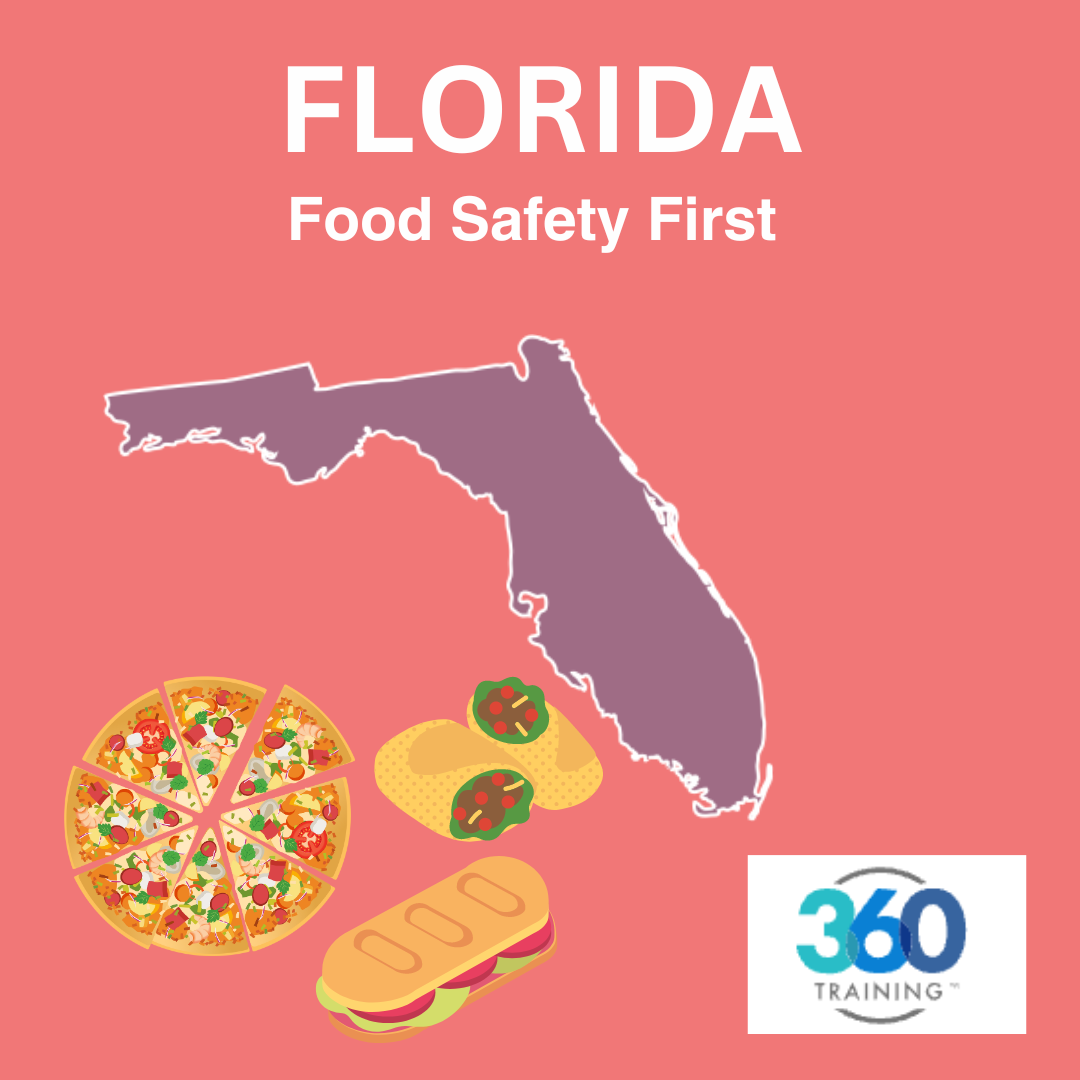The PASS Training Marketplace
Florida Food Safety First
Florida Food Safety First
Product Description
FoodHandlers® is a National, ANSI-Accredited Food Safety Training Provider.
Who needs to get a Florida food handlers certificate?
Who needs to get a Florida food handlers certificate?
According to the Florida Department of Business & Professional Regulation (DBPR), any food service employee who stores, prepares, displays, or serves food to the public must take food safety training. A food handler's card or certificate satisfies training and documentation requirements under the Florida DBPR.
How long do I have to complete Florida food handlers training?
How long do I have to complete Florida food handlers training?
Any food service employee working in a licensed public food service establishment must complete food safety training within 60 days of starting work. Workers must retake the course every three years before their certificate expires.
The Florida Department of Health sets food safety training standards in Section 509.049 of the Florida Statutes. This food handlers course meets the requirements of Rule 61C-4.023 of the Florida Administrative Code.
Is Florida food service training the same thing as Florida food manager certification?
No. Food service training provides a food handlers card and qualifies employees for basic food service duties. Certified food managers must be trained in additional topics not covered in the Chez Pierre Florida Food Handlers Card course.
Is Florida food service training the same thing as Florida food manager certification?
No. Food service training provides a food handlers card and qualifies employees for basic food service duties. Certified food managers must be trained in additional topics not covered in the Chez Pierre Florida Food Handlers Card course.
Learn more about Florida food manager training and the certification exam to become a certified food manager. StateFoodSafety is an accredited provider of the Food Protection Manager Certification Exam and offers an 8-hour training program to help you prepare for the exam.
Enroll in our Florida course today!
Enroll in our Florida course today!
FoodHandlers® is a National, ANSI-Accredited Food Safety Training Provider.
Purpose
Our food handlers card training aims to provide food handlers with the information they need to handle food safely. This information may include content specified by state or local regulations.
Purpose
Our food handlers card training aims to provide food handlers with the information they need to handle food safely. This information may include content specified by state or local regulations.
Scope
This program will teach or reiterate responsible food handling principles to the learner.
This program will teach or reiterate responsible food handling principles to the learner.
Learning Objectives
(Effective date April 29, 2020)
(Effective date April 29, 2020)
By the end of this course, you will be able to:
- Recognize how food can cause illness or allergic reactions.
- Prevent contamination of food and food-contact surfaces with the hands and body.
- Identify which symptoms or illnesses must be reported to a manager.
- Use time and temperature control throughout the flow of food.
- Maintain a clean environment for food preparation and service.
Outcomes
After you pass the test, you’ll receive your food handlers card.
After you pass the test, you’ll receive your food handlers card.
Requisites to earn a certificate
You must complete the course and pass the test to earn a certificate.
You must complete the course and pass the test to earn a certificate.
- Validity
- 3 years
- Final Exam
- Yes
- Final Exam Passing Score
- 70%
- Certificate
- Yes
- Average Rating
- / 2 Reviews
Foodborne Illness Awareness Chapter 1
Foodborne illness awareness is crucial for preventing food poisoning. Each year in the United States, approximately 48 million cases of foodborne illness occur, leading to 128,000 hospitalizations and 3,000 deaths.
Remember to practice proper food safety by washing hands, separating raw meats, cooking to the right temperature, and promptly chilling perishable foods.
Person-In-Charge Role and Responsibilities Chapter 2
The person in charge must ensure proper hygiene practices, including handwashing and sanitizing surfaces, regarding basic food safety.
Additionally, they should oversee food storage, handling, and cooking processes to prevent contamination and promote safe consumption.
Proper Handwashing Chapter 3
Proper hand washing involves thoroughly wetting hands with clean, running water, applying soap, and scrubbing all surfaces (including between fingers and under nails) for at least 20 seconds.
Rinse hands well under running water and dry with a clean towel or air dryer.
Health and Hygiene Chapter 4
Health refers to an individual’s physical, mental, and emotional well-being.
Hygiene, on the other hand, involves practices that maintain cleanliness and prevent the spread of disease.
Cooking Temperatures Chapter 5
When cooking meat or eggs at home, remember these important temperatures:
- Eggs and all ground meats must be cooked to 160°F (71°C).
- Poultry and fowl should reach 165°F (74°C).
- Fresh meat steaks, chops, and roasts are safe at 145°F (63°C).
Use a thermometer to check temperatures and ensure safe food preparation.
Temperature Danger Zone Chapter 6
The temperature danger zone for basic food safety is typically between 40°F (4°C) and 140°F (60°C).
Bacteria thrive and multiply rapidly within this range, significantly increasing the risk of foodborne illnesses.
Contamination & Cross-Contamination Control Chapter 7
Contamination refers to harmful food substances (such as microorganisms or allergens).
Cross-contamination occurs when these contaminants transfer from one surface or food item to another, potentially compromising safety.

